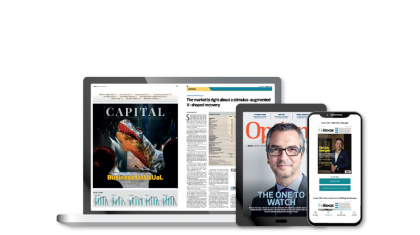Taking all the data from the recent weeks together, there is growing evidence — despite the occasional setback — that the US economy is not only gaining momentum, but the acceleration is likely to be sustained for a while:
• The US Federal Reserve Bank’s Beige Book survey revealed growing demand for workers and rising wages: The past two months have seen further tightening of the labour market, resulting in more instances of labour shortages not just in the highly skilled engineering and technology- related professions, but even in the blue-collar construction and manufacturing industries. As a result, moderate increases in wages have been seen in most districts.
• Bullish consumers likely to boost retail sales and housing: The improvement in job and wage prospects probably explains why consumers are increasingly more optimistic — The Conference Board’s Consumer Confidence Index reached a 15-year high in February. This ebullience in consumers should translate into further strength in US housing. After all, American home ownership rates are still at multi-decade lows, so more confidence about jobs and further wage growth is likely to translate into stronger housing demand, giving an extra fillip to domestic demand.
• American business confidence also at decade-high: Surveys by JPMorgan of middle-market business leaders as well as a separate survey of small firms showed heady levels of business optimism not seen for a decade. The ongoing economic recovery helps, but so do expectations that the Trump administration and its Republican allies will deliver higher fiscal spending, lower taxes and more deregulation that would improve sales and profits. President Donald Trump’s inaugural Budget proposal envisaged a colossal US$54 billion ($76.5 billion) rise in military spending. That could translate into a huge boost for the high-technology sector, given the technological intensity of New Age defence strategies. The multi plier effects of this defence expansion could be very substantial.
• Recoveries in the US, eurozone and Japan mutually reinforcing each other: More robust demand in the US will spill over into the other large economies that are its main trading partners, helping their economic recoveries take flight. Economic data in both the eurozone and Japan have surprised po sitively in recent weeks, even before the full effect of the American acceleration was felt, which tells us that these large economies are putting much of their recent weakness behind. That could also explain the surge in new orders for American services companies — most likely reflecting this spillover from Japanese and European recoveries.

To continue reading,
Sign in to access this Premium article.
Subscription entitlements:

Less than $9 per month

3 Simultaneous logins across all devices

Unlimited access to latest and premium articles

Bonus unlimited access to online articles and virtual newspaper on The Edge Malaysia (single login)
Related Stories
- Oxford Economics says US economic exceptionalism will not end in 2026
- Trump plans 100% duty on patented drugs in new round of tariffs
- US initial jobless claims drop to the lowest level since July






